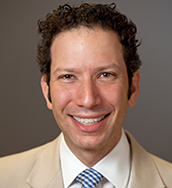Economist pinpoints when hospitalizations increase health care costs but don't prevent death

LAWRENCE — It’s no secret that a large percentage of U.S. medical spending is squandered.
But a University of Kansas professor has pinpointed one of the obvious places where this could be fixed.
 “Health economists and Americans overall are very worried about how much we spend on health care,” said David Slusky, associate professor of economics. “So can we find places where we’re not getting a lot for the care?”
“Health economists and Americans overall are very worried about how much we spend on health care,” said David Slusky, associate professor of economics. “So can we find places where we’re not getting a lot for the care?”
That’s addressed in his new paper, “Does the Marginal Hospitalization Save Lives? The Case of Respiratory Admissions for the Elderly,” distributed by the National Bureau of Economic Research. Slusky and co-author Janet Currie studied the decision to hospitalize elderly Medicare patients who present at the emergency room with respiratory conditions. They found that marginal hospitalization — in addition to putting the patient at risk for conditions developed during such a stay — increases the number of hospital days by seven and increases charges by $42,000.
Yet it has absolutely no effect on their mortality rate within the next year.
First, Slusky had to determine what constituted “marginalized admission.”
“If you come in with a broken finger and want to stay as an in-patient, they’re going to send you home. Walk in with a gunshot wound, they’re going to keep you overnight,” he said.
“But there are cases where you walk in coughing and a little short of breath, and it’s not clear. Maybe they should admit you, and maybe they should send you home.”
Age also factors significantly into this process.
“If a 95-year-old comes in, we might send him home. But a 45-year-old comes in unable to breathe, we’re going to admit every one of them,” Slusky said.
The professor scrutinized years’ worth of discharge data from New York state hospitals. This included the medical observations of these individuals, whether they were admitted and what eventually happened to them. He also studied admissions decisions that were driven by differences in local practices for otherwise equivalent patients.
“When you do that, you then find no impact on mortality of a marginal admission. What you do find is it costs more money, and you spend more time in the hospital. It does help you stay out of the ER in the future, but it also makes it more likely you’ll show up in the outpatient clinics in the future,” said Slusky, who also provided expert testimony last week at the Kansas Capitol about bipartisan Medicaid expansion championed by Gov. Laura Kelly and Senate Majority Leader Jim Denning.
Slusky, who co-wrote the paper with Currie, his former graduate adviser at Princeton University, concedes marginal admissions are just a small piece of what is driving up health care costs. Hospitals, providers and pharmaceuticals — among other factors — share the blame.
As a health economist well-versed in infrastructure, environment and insurance, what is his advice for dealing with these rising costs?
“I have a solution and a not-solution,” the Philadelphia native said.
“The not-solution is putting everybody in high-deductible plans. We have really good research that verifies you will get less health care of every type if we put you in a high-deductible plan. The problem is, you won’t just get less of the things you don’t need, you get less of everything. People often ask me, ‘Will this save money?’ I hate that question. I could stop eating and save money, but that’s ridiculous. That’s not the right question.”
He believes the solution involves encouraging better-functioning markets between different parts of the health care industry.
“We need more competition, not less. And the government is actually often making there be less competition, not more,” he said.
With respiratory conditions accounting for 28% of all emergency room visits and 42% of hospitalizations, clinicians are inevitably going to face the dicey decision of whether to admit a patient.
“We’re having a real moment of reckoning right now about ‘How does that get our health care costs down?’ and ‘What does that mean?’” said Slusky, who has worked at KU since 2014.
“I think the tide is shifting away from ‘you have to do something.’ Inaction and action are two valid options. They have cost and benefit that should be evaluated. And we shouldn’t let ‘action bias’ drive us to do things we otherwise wouldn’t do just because it’s something and not nothing.”
Photo credit: iStock